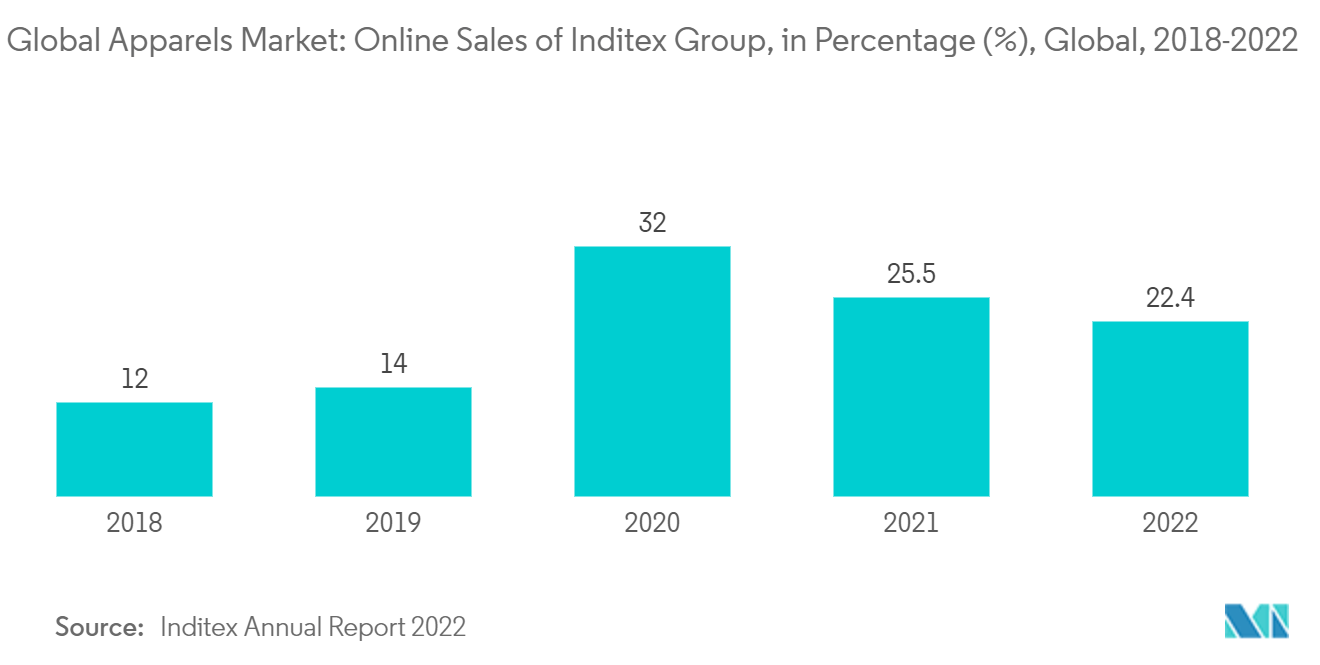Market Trends of Apparel Industry
E-Commerce Driving the Apparel Business
- Innovative designs, fast fashion trends, and creative marketing strategies are key factors for the apparel industry's growth. The increased exposure to the internet and e-commerce among consumers has improved the fashion consciousness and availability of high-end brands and limited edition products. Using influencers has impacted how fashion companies market their products and look to increase sales. For instance, in November 2022, Steve Madden announced its first-ever African collaboration with South African media personality Bonang Matheba. The apparel, footwear, and accessory brand stated that this collaboration is part of their 10-year celebration in Africa.
- Additionally, local startups with sustainable approaches are gaining customers' interest worldwide. These startups offer different styles, such as formal, casual, and traditional wear, with unique designs and concepts that attract customers. In addition, online apparel sales have seen a boom over recent years as consumers have gradually become more comfortable making wardrobe purchases from their computers and handheld devices. For instance, according to the International Trade Administration US Department of Commerce, 55% of Canadians performed online retail purchases via their mobile devices as of January 2022, and this tendency is increasing. Customers in the millennial generation (those between the ages of 18 and 34) are leading the trend, with 47% of them making at least one weekly purchase online. These factors help in boosting e-commerce sales in the apparel market. The growth in online apparel sales is mainly attributed to web-only startups.

Asia-Pacific Is the Fastest Growing Market
- The Asia-Pacific region is expected to hold a prominent share of the global apparel market due to various government initiatives in the textile industry. For instance, the CNTAC, the governing body of China's textile and apparel industry, released its 14th five-year plan, detailing the development objectives, growth strategies, and priority tasks for China's textile and apparel sector for 2021-2025. China is also one of the major exporters of garments worldwide.
- For instance, according to the data released by the General Administration of Customs, China (GACC), China exported USD 170.26 billion of garments and accessories in 2021. Moreover, major companies are planning their expansion to Asian countries to gain a broader consumer base. For instance, in November 2022, American menswear brand Joseph Abboud announced its expansion plans in China by partnering with Shanghai Youxiang, China's leading luxury fashion retail group.
- Furthermore, India's rising population, growth in disposable income, and evolving fashion trends are anticipated to boost the country's apparel market. India is also a significant exporter of textiles, promoting the apparel market growth. Various government initiatives are further fueling the development of the textile and garment industry. For instance, government initiatives such as the Amended Technology Upgradation Fund Scheme and the Advance Authorization Scheme are focused on strengthening and increasing the production of textile and apparel products in the country. The Government of India has also approved the continuation of the project for rebate of state and central taxes and levies on the export of garments and made-ups (RoSCTLscheme) up to March 2024 to boost the export competitiveness of the Indian apparel market.


